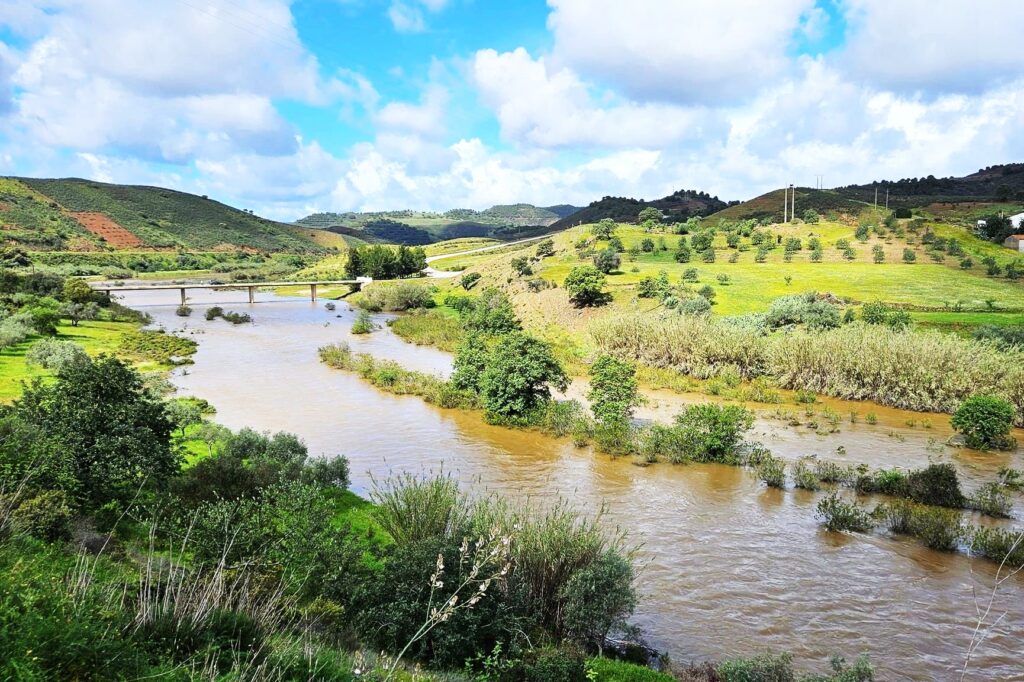The water stored in the Algarve dams rose significantly in the last week, thanks to the heavy rain that fell in the south of the country, particularly in the Funcho and Bravura reservoirs, the first for an increase of 12% and the second for have seen the stored volume almost double.
In all of the Algarve dams, the increase in the volume of water stored was more than 30 cubic hectometers (hm3), but this does not mean that we can now breathe a sigh of relief, warned Pedro Coelho, regional director for the Algarve of the Portuguese Environment Agency.
«The rain that fell in March was significant and important for the recovery, but we are still 7 hm3 less than last year. If, at the end of 2023, we had the chill we had, if it doesn't rain anymore, the same thing will happen again this year", said this official, speaking to Sul Informação.
Throughout the month of April, the APA will “evaluate the situation”, especially because it still remains to be determined what effect the rain had on the region's aquifers.
«We will have a meeting of the Drought Monitoring Committee, in Faro, probably in the middle of this month. I don't believe there will be a total easing of restrictions, but I also don't believe everything will stay the same. But this will have to be evaluated and that is what we are doing now,” she said.
This opening to ease restrictions is possible thanks to the accumulated rainfall recorded since March 24th, which was particularly significant in Fóia, in Monchique (129 millimeters), according to data from the Portuguese Institute of the Sea and Atmosphere (IPMA).
Also at the stations of Loulé (92 mm), Albufeira (89,5), Olhão (84,4) and Porto Airport Faro (81,8) there were high accumulations, according to IPMA. At the Meteofontes stations, Fontes de Estômbar and Carvoeiro, the accumulated values were 83 mm and 87 mm, respectively, according to Bruno Gonçalves, the person responsible for this project, who speaks of «very good values».
For now, it is possible to assess the effect of so much rain falling on the Algarve reservoirs, with Funcho in the spotlight, as it is now the only dam in the region that has a stored volume above 50% - 53%, more precisely -, with the stored volume increased by 12% between the 25th and 31st of March, according to the most recent weekly bulletin from the National Water Resources Information System (SNIRH), published this Tuesday.
In cubic hectometers, the increase was more than 5 hm3, from 19.780 hm3, on the 25th, to 25.360 hm3, on the 31st.
To give an idea of the significance of this increase, the volume gained in this dam alone is very close to the monthly needs of the entire Algarve for public supply.
In the case of the Bravura dam, the increase was equally significant (1,6 hm3 more), but what stands out most is the increase above 20% (20,8%, compared to 12,5% a week before). , which allowed this reservoir to leave the group of those in the most critical situation in the country.
The same cannot be said about the Arade Dam, which is currently the only one in mainland Portugal with a stored volume below 20%. In this reservoir there was practically no evolution, despite the rain, remaining at 17%, as a week before.
The Odelouca dam, the largest in the Algarve and which is also located in the Barlavento Algarvio, like those already mentioned, now has 6% more water.
After all, there is now an additional 8.699 hm3 of water stored in the Odelouca reservoir (increase from 56.245 to 64.944 hm3), which is 41% of its maximum capacity.
In Sotavento, the increase in the volume stored in the two dams there was more modest, but no less significant.
The Odeleite dam now has a useful volume of 61.340 hm3, 4% more than on March 25th, and is now at 47% (5840 hm3 more).
In the Beliche reservoir, also in the municipality of Castro Marim, the increase was 3%, for a total of 39%, and 1666 hm3, for a stored volume of 18,729 hm3.



















Comments